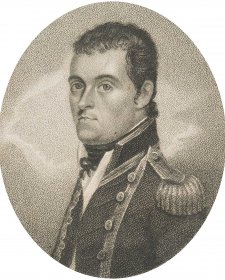Matthew Flinders (1774–1814), was one of the world’s most accomplished navigators. Born in England, Flinders entered the navy at age 15, served with Captain Bligh, and at age 20 sailed for Australia with surgeon George Bass. From 1798 to 1803 he made detailed surveys of Australia’s coastline and islands, enduring unsuitable, leaking and rotting vessels. The first person to circumnavigate Australia, he inspired and repaid loyalty amongst his comrades, and was sympathetic to the cultures of Indigenous Australians. In December 1803, during a trip back to England, Flinders was forced to take port in Mauritius due to the unfitness for service of his schooner. Here he was detained, unshackled, until 1810, because governor General De Caen, a supporter of Napoleon, suspected him of being an English spy. Having returned to England at last, Flinders saw the publication of his findings under the title A Voyage to Terra Australis on 18 July 1814. The following day, he died. His grave, the whereabouts of which was long a mystery, was discovered beneath Euston Station, London, in January 2019 during archaeological surveys pending construction of a high-speed railway.







